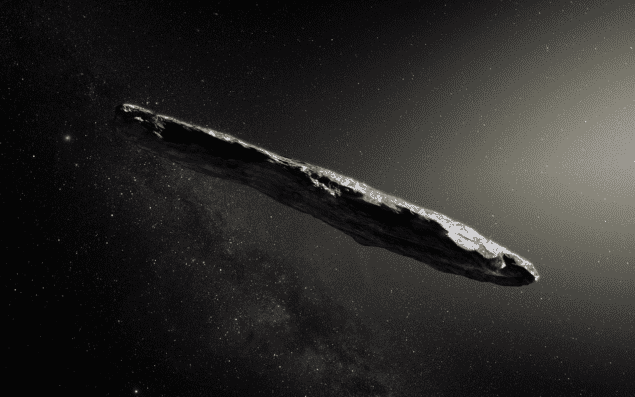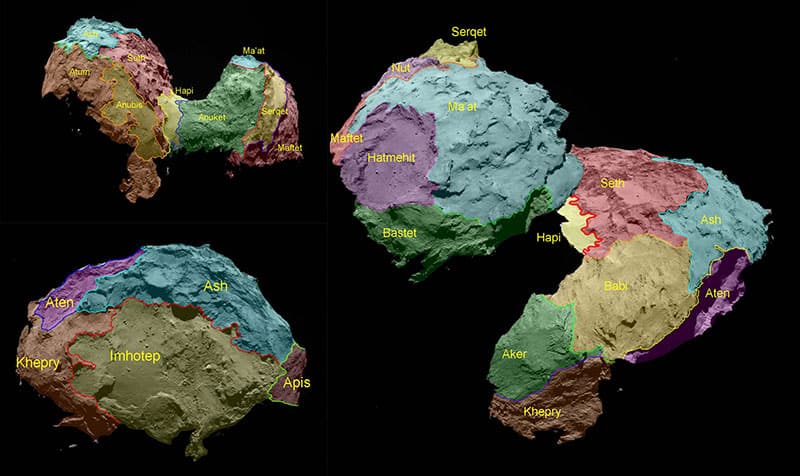
‘Oumuamua, a mysterious cigar-shaped object travelling through the solar system having arrived from interstellar space, is being propelled by outgassing as it is heated by the Sun. That is the conclusion of Marco Micheli of the European Space Agency and colleagues, who have looked at ground- and space-based observations of the motion of the object.
First spotted on 19 October 2017 by the Haleakala Observatory in Hawaii, ‘Oumuamua is 230 m long and is the first object to be identified as entering the solar system from interstellar space. ‘Oumuamua means “scout” in Hawaiian to reflect its long voyage from a distant planetary system.
The object’s extremely eccentric orbit and shiny surface initially led the International Astronomical Union (IAU) to classify ‘Oumuamua as a comet. However, that status was quickly changed to an asteroid when astronomers could not find a “coma” of gas and dust surrounding the object, something that is seen around comets. Then in November 2017, ‘Oumuamua was again reclassified by the IAU as the first ever “interstellar object” – a new classification created in light of the object’s discovery.
Extra acceleration
In this latest study, Micheli and colleagues tracked ‘Oumuamua as it moved through the solar system and found that its trajectory cannot be explained solely by the gravitational attraction of the Sun, planets and large asteroids.

Rosetta data deluge reveals dynamic comet with sand dunes and jets
Calculations done by the team rule out pressure from solar radiation and magnetic interactions with the solar wind as causes of the additional acceleration. Instead, they report evidence of a non-gravitational acceleration that is directed away from the Sun. This phenomenon is also seen in comets, which can be propelled by the gas they release as a result of being heated by the Sun.
While ‘Oumuamua appears to be comet-like, Micheli and colleagues point out that it appears to have chemical and dust properties that are unlike most known comets. They speculate that the observed lack of dust surrounding the object could mean that ‘Oumuamua is devoid of small grains of solid material – or indeed contains a very small amount of dust in general. Another possibility is that ‘Oumuamua began its long journey as a typical comet, but its surface was somehow modified along the way.
Writing in Nature, the astronomers conclude, “although ‘Oumuamua looks familiar there are differences that relate to its birth in a solar system far from our own”.



